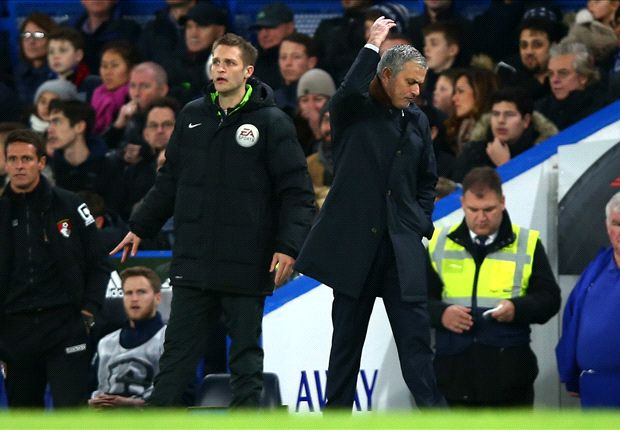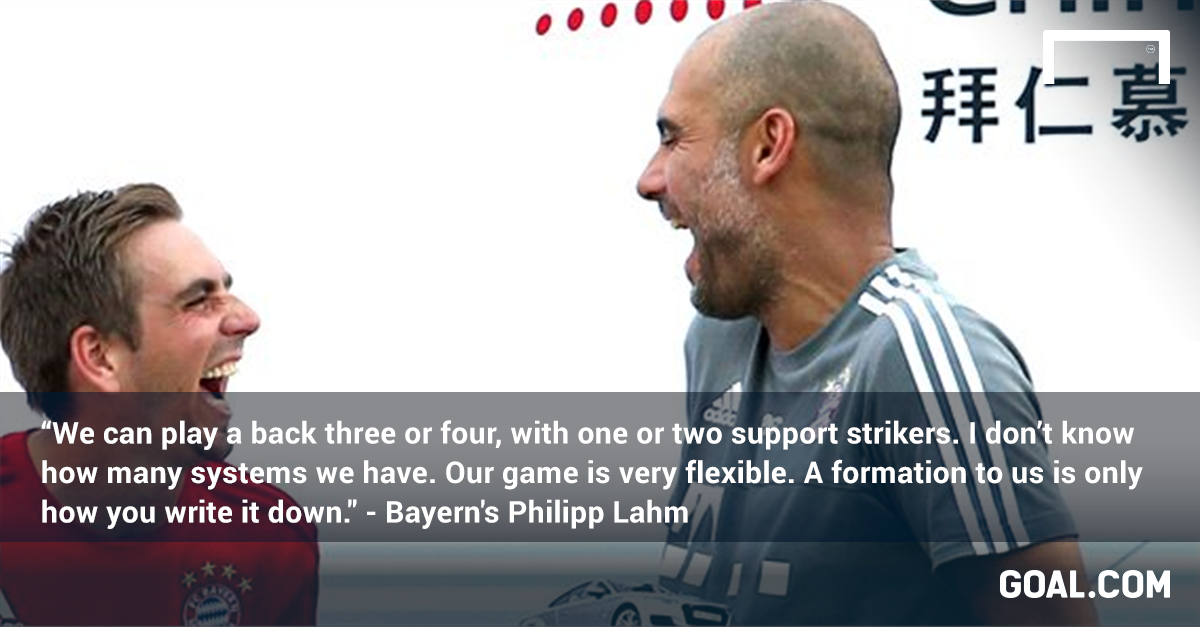Tactically outdated Mourinho must reinvent himself - just like Guardiola

"During our first team meeting at Real Madrid, Jose Mourinho didn't talk much about tactics. In tactical terms, you just have to look at how he eliminated Barcelona in the Champions League with Inter in 2010 by playing defensive, counter-attacking football. Despite all the talented players he has had at his disposal, the recent years have shown that he has probably become outdated tactically.”
This was the damning response of an ex-Mourinho player when asked by Goal if his former Madrid mentor was to blame for Chelsea’s disastrous season.
The player in question asked to remain anonymous - he is active and may have to work with Mourinho again. But he is not alone in his criticism of the Chelsea boss. There have been numerous theories as to why the flailing Premier League champions, who sit just two points above the relegation zone following Saturday’s humiliating home loss to Bournemouth, have collapsed so spectacularly this campaign.
Is Mourinho suffering from third season syndrome? Is the dressing room broken? Is a poor summer transfer market to blame? Did the controversial departure of first team doctor Eva Carneiro affect the squad?
However, the former Madrid player's narrow focus - whether Mourinho has been at fault tactically - is not a question that has been explored in depth. There can be little argument that since taking over Real Madrid in 2010, Mourinho has not evolved in a strategic sense. During his three-year spell at the Santiago Bernabeu and his two-and-a-half seasons back at Chelsea, he has almost always utilised his favoured 4-2-3-1 formation.
But this is a system that - despite emerging as the most popular and innovative formation of the new millennium – is now out of fashion among the elite. None of Barcelona, Bayern Munich, Paris Saint-Germain, Juventus or Atletico Madrid use it. Carlo Ancelotti quickly abandoned it after succeeding Mourinho at Madrid, although the under-fire Rafa Benitez has flirted with its return this term.
The 4-2-3-1 is still relatively popular in the Premier League, so the formation alone cannot be used as an excuse for Chelsea’s dismal domestic form – even if it could help explain why English sides have flopped in Europe in the last few years. But it is just as much howMourinho’s players interpret their roles within this system that is hurting Chelsea. Jose's obsession with fielding a team that is solid, organised and protected by a flat back four and two holding midfielders has not once wavered. Although Eden Hazard and Willian do have some licence to roam and switch flanks in offensive phases and Cesc Fabregas can act as a floating playmaker, the position of each player in the team is rigid. Each occupies a place on the right, the left or the centre and generally holds their position throughout the game. With such clear reference points, Chelsea are not only painfully pragmatic but also very predictable.
Top football teams today need to be far more flexible and expansive. They can’t use the same formation and occupy the same positions each game. If they do they will soon be found out, especially with so much technology and data available to analyse every movement on the pitch.
Pep Guardiola is surely the most advanced coach tactically right now. On Saturday, he selected the same Bayern Munich XI for the first time in 100 games. Last season, 10 of Mourinho’s team started at least 26 of their Premier League matches and three were ever-presents.
Attempting to decipher Pep’s formation on the pitch is virtually impossible. To Guardiola, there is no such thing as a set formation, it is all about interpreting space depending on the scenario and where the ball and opponents are. Then it is about exploiting this space by creating ‘passing lanes’ to provide multiple channels of attack in each move. As a result Bayern can line up at the centre circle in a 3-4-3 or 4-3-3, then 10 seconds later be attacking in a 2-3-5.
“We can play a back three or a back four, we can play with one or two support strikers, whatever,” captain Philipp Lahm told Goal last month. “I don’t know how many systems we have. Our game is very flexible in any case. [A formation to us] is often only about how you write in down.”

Guardiola is a proponent of total football. He demands that his players are comfortable in any area of the pitch – and that his defenders are just as proficient going forward as they are backwards. Compare David Alaba, Philipp Lahm and Jerome Boateng starting moves from deep and pushing into midfield with Chelsea’s John Terry, Gary Cahill and Kurt Zouma, who are incapable of crossing the halfway line unless it is to go up for a corner.
Then look at Diego Costa, a lone striker with little to no lateral or off-the-ball movement – once again an easy reference point for defenders unless he is in peak condition. A big hulking target man has been a favourite of Mourinho for most of his career, with Didier Drogba his crown jewel. But, this type of physical striker may also be going out of fashion.
The best team in the world, Barcelona, employ a trio of small, skilful, interchanging forwards. Manchester City have the premier attack in England with the pint-sized Sergio Aguero, Raheem Sterling and David Silva buzzing around. Juventus and Atletico are building their futures around the tiny but incredibly talented Paulo Dybala and Antoine Griezmann, respectively. PSG’s Zlatan Ibrahimovic and Bayern’s Robert Lewandowski may be big but they are technically the equal of anyone.
Guardiola’s philosophy that players and formations need to be eclectic and adaptable is catching on. Last season, Massimiliano Allegri won the domestic double and reached the Champions League final with Juventus by deploying numerous different systems. He regularly switched from a 4-3-1-2 to a 3-5-2, 4-4-2, 4-3-2-1 and 4-3-3 – often during the same game. This ability to “change the menu”, as Patrice Evra described it, is crucial.
Chelsea, meanwhile, have little variation to their play. Indeed, this season 13 of their 28 goals in the Premier League and Champions League have come from set pieces, while many others have been via deflections or goalkeeping gaffes. Very few have been well crafted.
Then look at Diego Costa, a lone striker with little to no lateral or off-the-ball movement – once again an easy reference point for defenders unless he is in peak condition. A big hulking target man has been a favourite of Mourinho for most of his career, with Didier Drogba his crown jewel. But, this type of physical striker may also be going out of fashion.
The best team in the world, Barcelona, employ a trio of small, skilful, interchanging forwards. Manchester City have the premier attack in England with the pint-sized Sergio Aguero, Raheem Sterling and David Silva buzzing around. Juventus and Atletico are building their futures around the tiny but incredibly talented Paulo Dybala and Antoine Griezmann, respectively. PSG’s Zlatan Ibrahimovic and Bayern’s Robert Lewandowski may be big but they are technically the equal of anyone.
Guardiola’s philosophy that players and formations need to be eclectic and adaptable is catching on. Last season, Massimiliano Allegri won the domestic double and reached the Champions League final with Juventus by deploying numerous different systems. He regularly switched from a 4-3-1-2 to a 3-5-2, 4-4-2, 4-3-2-1 and 4-3-3 – often during the same game. This ability to “change the menu”, as Patrice Evra described it, is crucial.
Chelsea, meanwhile, have little variation to their play. Indeed, this season 13 of their 28 goals in the Premier League and Champions League have come from set pieces, while many others have been via deflections or goalkeeping gaffes. Very few have been well crafted.
Comments